November 6, 2020
Semmering Railway Hiking Trails, History & Map
Active life, Culture, Earth Science, Guide, Hiking, History
Top attractions:
About Semmering
Semmering railway brings a bittersweet nostalgia of the glorious days of empire, when unimaginable could be brought to life. The whole setting gives a surreal atmosphere of a steampunk computer game rather than real life. Located just 100 km (60 mi) from Vienna, Semmering is a perfect short destination from the Capital of Austria. The journey will not only bring you through history but to the times of different thought, to the times once impossible was made possible.
This article is about exploring the marvelous region, Semmering Railway is built through. While riding the train uncovers the beauty of the surrounding Alps, the mixture of nature, and the ingenuity of human engineering could be best observed from the distance. Because of the mountainous landscape of the Semmering area, hiking is naturally the best way to do it. Despite that, there are many more things to do in Zauberberg Semmering.

Zauberberg Semmering is probably the closest major skiing resort to Vienna. Photo by Alis Monte [CC BY-SA 4.0], via Connecting the Dots
Semmering Details
- Starting point: Gloggnitz train station (436 m / 1,430 ft)
- Ending point: Mürzzuschlag train station (677 m / 2,221 ft)
- Region: Lower Austria and Styria
- Coordinates: 47.6390° N, 15.8305° E
- Distance from Vienna: 100 km / 60 mi
- Distance from Graz: 107 km / 66.5 mi
- Constructed: 1848 – 1854
- Length: 41 km / 25.5 mi
- Highest Point: Semmering tunnel (895 m / 2,936 ft)
- UNESCO World Heritage Site: 1998
- Best time to visit: All year
- Weather: Semmering
- Accommodation: Booking.com

Be aware that most of the pathways during the winter might be very hard to trespass without proper gear. Photo by Alis Monte [CC BY-SA 4.0], via Connecting the Dots
History of Semmering Railway
Built between 1848 and 1854, Semmering Railway is the first modern mountain train line in the world built with a standard gauge track. Even with all the current technology, this segment of the railway clearly stands out in Austria with all of its aspiration. These kinds of designs could only be imagined during the romantic advent of the train railway construction. The fact, that the Semmering rail tracks are still widely used to this day, is the proof that this project was, and is, a great achievement for the advancement of human engineering.

The legendary view from Austrian banknote – “20 Schilling Blick”. Photo by Alis Monte [CC BY-SA 4.0], via Connecting the Dots
The Genius behind Semmering Railway
The visionary of the project was Carl von Ghega, born in Venice in 1802, which then was a part of the Austrian Empire. Things went well for the young future-railway expert. He had an opportunity to study engineering and railways across Europe. In 1842, Carl von Ghega was given the special task of foreseeing the construction of the whole future Austrian railway, he was sent out to the US for study. After Ghega returned, the works started by connecting Mürzzuschlag to Graz and then Trieste. The railway from Mürzzuschlag through Semmering to Vienna was believed to be impossible, but the gamble the state took had paid off. In 1844 Carl von Ghega shared his schemes for what is now know as Semmering Railway.

The monument for the visionary of Semmering Railway, Carl von Ghega, is right at the train station of Semmering. Photo by Alis Monte [CC BY-SA 4.0], via Connecting the Dots
A UNESCO Site
It didn’t take that long for the designs of Carl von Ghega to be realized and in 1854 the first locomotives rolled out for the unseen train trip through the Austrian Alps. Ghega’s engineering endeavor quickly transformed the whole region. These were the times, when modern tourism was born and the recreational ALPinism was invented. Semmering rapidly grew as one of the first towns, emerged fully for tourism purposes. The great villas along the railway is a part of the reason why in 1998, Semmering was inscribed as a UNESCO World Heritage site.
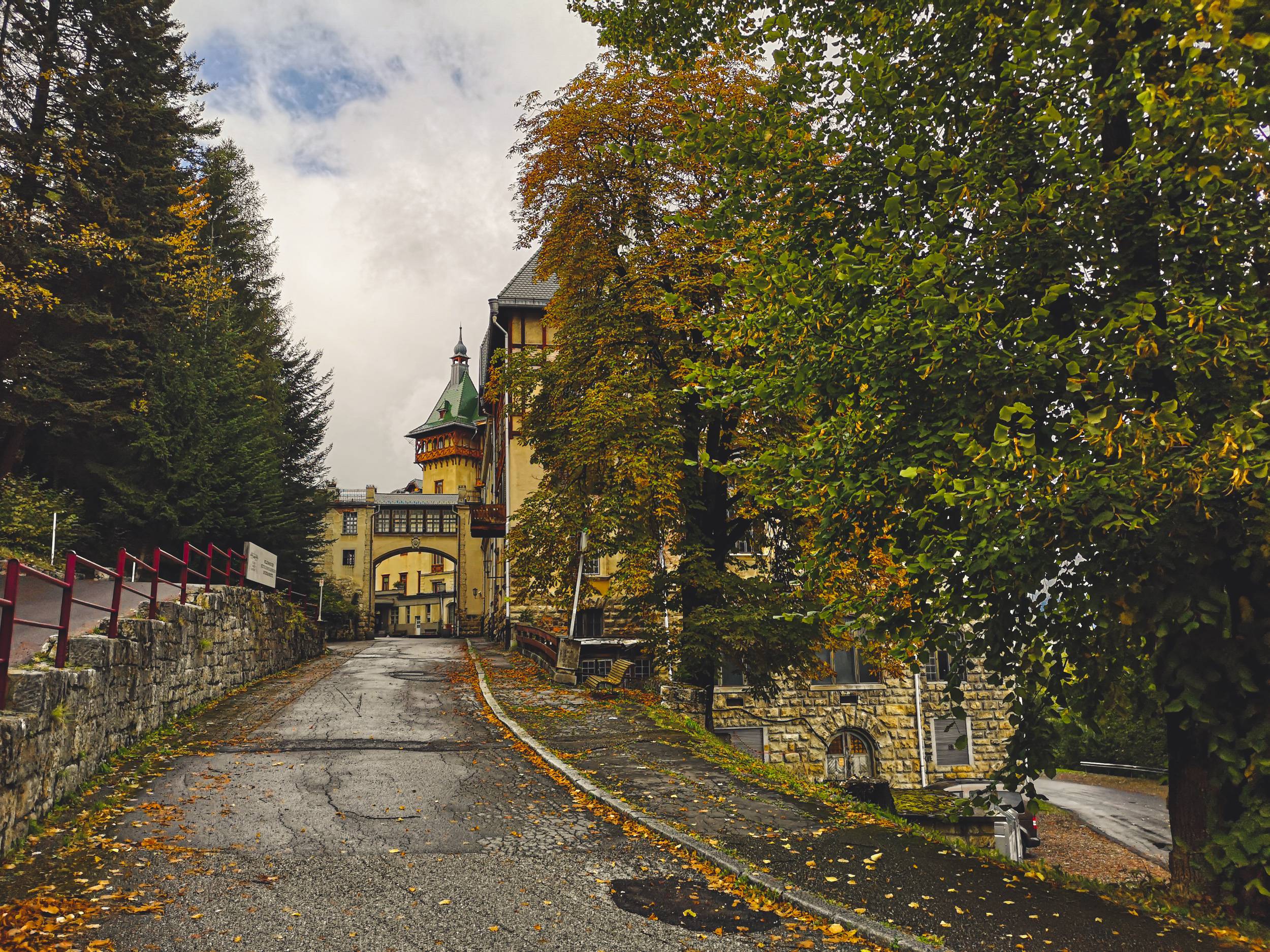
Suedbahnhotel Semmering was opened in 1882 exactly 1,000m above the sea level. It is one of the grand hotels. Photo by Alis Monte [CC BY-SA 4.0], via Connecting the Dots
Austrians themselves understand this great technological achievement Semmering Railway is. Until the issue of money with new designs in 1988, Carl von Ghega together with his project was depicted on 20 schilling banknotes. To this day, many hikers go to see the exact viewpoint, illustrated on the back of the note, better known locally as the “20 Schilling Blick”.

Österreichische Nationalbank, Public domain, via Wikimedia Commons

Maybe this is the very same place, where Carl von Ghega imagined Semmering Railway for the first time. Photo by Alis Monte [CC BY-SA 4.0], via Connecting the Dots
How to get to Semmering from Vienna
Not only Semmering Railway connects two Austrian regions: Lower Austria and Styria, but it is an important segment of the rail tracks between the two most populous cities in the state. Semmering is located almost at the exact midway between Vienna and Graz. It is not like Austria lacks mountains, thus the location and Semmering Railway itself must the reason for Semmering Ski Resorts’ success.
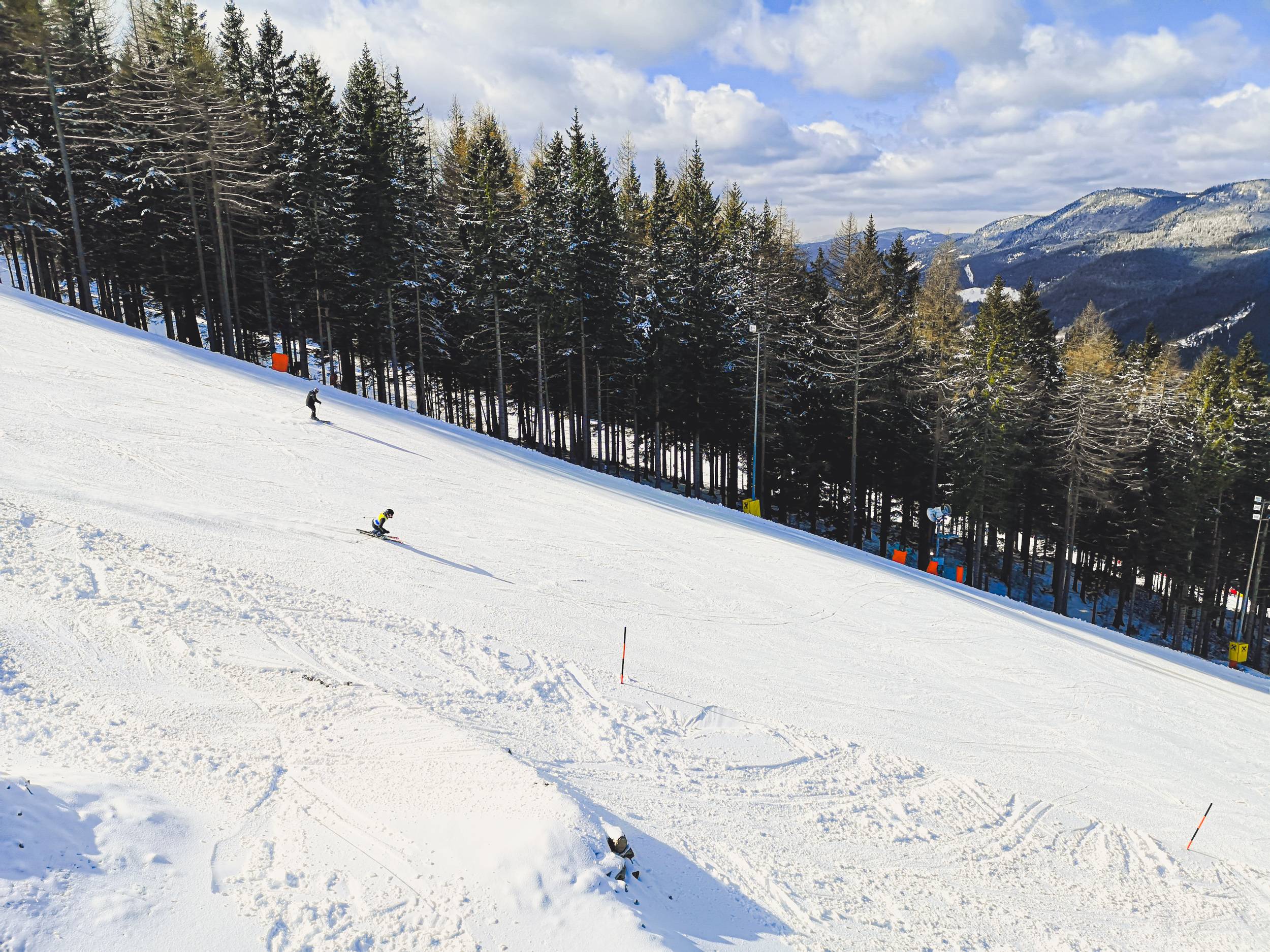
Despite Semmering Railway being a hikers’ paradise, most people come here for skiing. Photo by Alis Monte [CC BY-SA 4.0], via Connecting the Dots
By train
Since the railway was what made Semmering a popular tourist destination in the first place, obviously, trains are the logical mean of transport getting there. ÖBB RJ train can jet you to Semmering in just over an hour but it might cost a fortune if you won’t book your ticket in advance.
During the skiing season, consider buying ÖBB Wintersports combi-ticket, which has Skiing Pass included in the price.
Travel Cheaper
Alternatively, you use Einfach-Raus Ticket, which lets you use the regional trains (R, REX, CJ, S-Bahn) as much as you want during the day. It costs €35 / 2 people and the price per person reduces even more if you get more people abroad. It will take about 2h to complete your journey to Semmering using regional trains. If you are lucky to catch REX train, it will be faster.
Another option is to use VOR Freizeit ticket for €19 / person, just be sure not to cross the border with Styria because the ticket doesn’t cover the neighboring region. Unlike Einfach-Raus Ticket, regional buses are also included in VOR Freizeit ticket price.
You plan your trip on ÖBB website. Lastly, it doesn’t matter which option you choose, all the trains go through Semmering Railway.
TIP: Tickets between Vienna and Graz could be cheaper than tickets to Semmering.

Trains in Austria come and go like clockwork. Photo by Alis Monte [CC BY-SA 4.0], via Connecting the Dots
By bus
There is no reason to travel to Semmering by bus, if you find one – you can try to plan your route by bus on VOR website, but you’ll most likely going to be redirected to using trains.
It is a different story if you want to visit Semmering for skiing. You can use the service of Bring mish skiing bus, which just like ÖBB offers a combined ticket together with a skiing pass.
By car
It couldn’t be easier to get to Semmering from Vienna. I don’t know if it is by design or coincidence but S6 expressway goes right beneath Semmering Zauberberg Ski Resort. All you need to do is to take an exit before going into the tunnel and be sure to take an exit to S6 from A2 (South Autobahn) after Wiener Neustadt.
A similar story is driving from Graz as well. Just use the road of your preference to get to S6. It could be either A9 or A9 + S35.

Sonnwendstein on left and (1523 m / 4997 ft), Zauberberg onright (1,344m / 4409 ft), Semmering station beneath them. Photo by Alis Monte [CC BY-SA 4.0], via Connecting the Dots
Best Hikes in Semmering
Though Semmering is not the only one but probably the best of all hiking destinations to the Alps from Vienna. Given almost 170 years of tourism, the area had more than enough time to build an infrastructure you’d expect, find every beautiful vista and mark all the possible paths for its nature-seeking visitors. The area surrounding Semmering Railway is a true hikers’ paradise for anybody lusting for hilly landscapes, covered by forest with the rocky Alps in the background. Coming from Vienna, Semmering is one of the first regions, where you can get a taste of the typical Austrian mountainous beauty deeper inside the country.

Rax-Schneeberg mountain group. Photo by Alis Monte [CC BY-SA 4.0], via Connecting the Dots
Zauberberg Semmering – Sonnwendstein
- Distance: ~8 km / 5 mi
- Ascend: 257 m / 843 ft
- Type: Circular
- Difficulty: Intermediate
At 1,523 m / 4,997 ft Sonnwendstein is the highest mountain in the area right next to the main train station of Semmering Railway. You can’t find a more straight-forward hiking destination in this part of Viennese Alps than this. Especially, when the spice of the hiking route goes right on the mountains ridge from Zauberberg to Sonnwendstein itself. Along the way you’ll get to climb another peak – Erzkogel (1,504 m / 4,934 ft) – if constant 360° panorama is not enough. In short, the hike is fantastic, but a problem is how to get to the start of it. During the winter I would recommend using Zauberberg Semmering cable car, but during the summer you could fancy climbing it yourself.

Between Sonnwendstein and Zauberberg stands a third peak – Erzkogel, 1,504 m / 4,934 ft. Photo by Alis Monte [CC BY-SA 4.0], via Connecting the Dots
Due to its nature, this hike has to have sort-of a circular route. Purely for enjoyment reasons, I would recommend climbing Sonnwendstein through the mountains ridge, but getting-off of it is your call. You can descend to Semmering train station straight from Sonnwendstein, but the easier way is through the supply/ranger road – the one I marked on the map. Since I did the hike during the winter, it was my personal choice. This path might not be as exciting but it is easy to walk, has a cover from wind and is generally safer.
Another amazing thing about hiking Zauberberg – Sonnwendstein is how quickly you can get to feel that aura of tranquillity the mountains have. Once you get to the top of Zauberberg Semmering and enter the woods, it instantly disconnects you not only from the busy ski resort but from everything else. It is a shortcut to the serene mountain silence, giving that peace of mind many hikers seek. A quick getaway to Alps.
Semmering – 20 Schilling Blick
- Distance: ~2.5 km / 1.55 mi
- Ascend: 82 m / 269 ft
- Type: One direction
- Difficulty: Easy
This is a simple walk I would recommend to anybody, including people who don’t like hiking. Reaching “20 Schilling Blick” (eng. 20 Schilling View) could be done with ease, it feels rather like a healthy procedure in a spa resort than a hike in mountains.
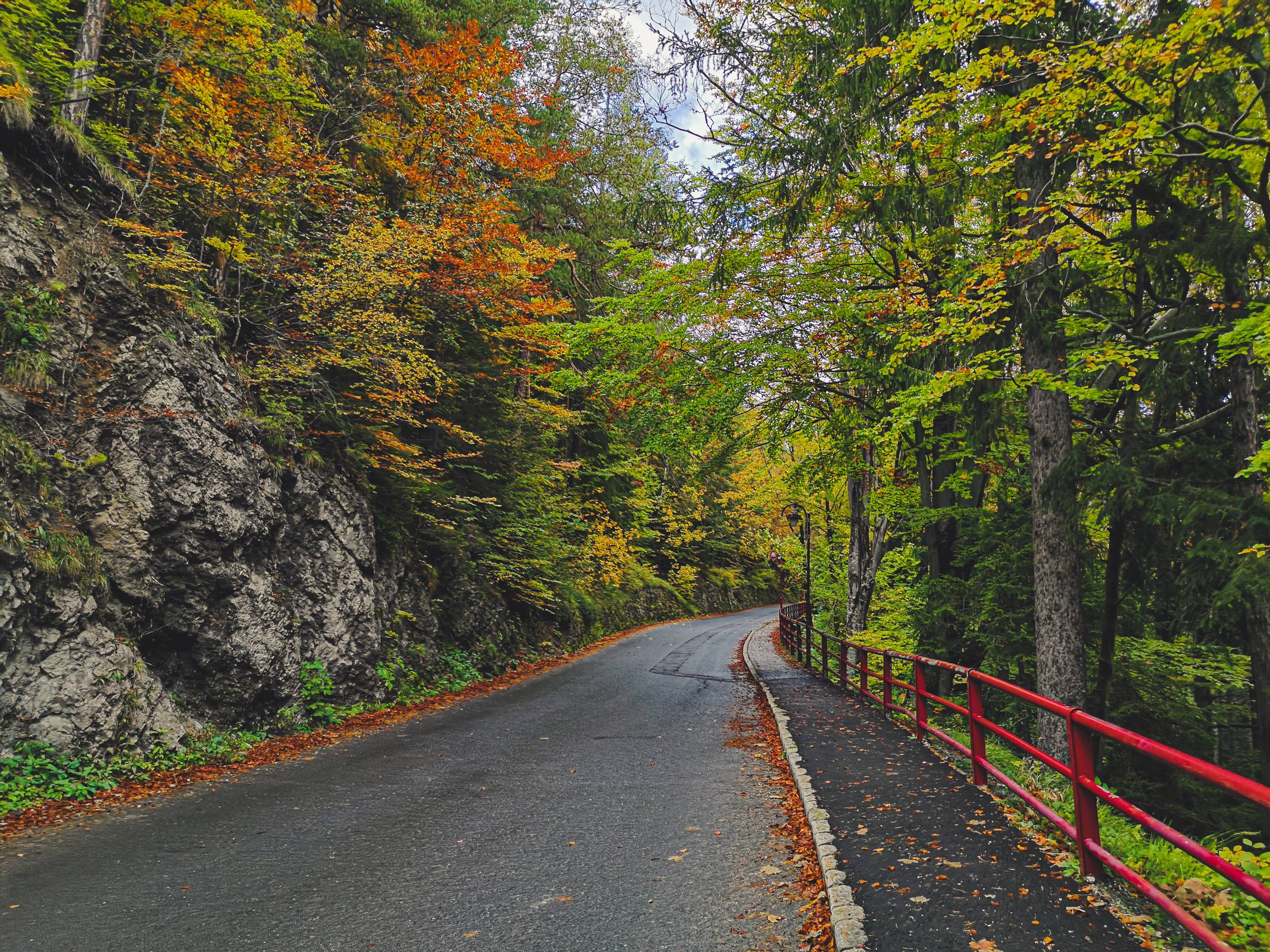
Most of the hike is just a peaceful walk through Semmering resort. Photo by Alis Monte [CC BY-SA 4.0], via Connecting the Dots
For the most part, the hike from Semmering train station will lead through the old resort on an asphalt road, but after reaching Wolfskogel, it turns uphill through a scenic forest road. It won’t take that long until you reach “20 Schilling Blick”, the whole hike will go by like a warm summer breeze.
20 Schilling View
Given all the anticipation, created by the directions and the hike itself, 20 Schilling banknote itself is not that big of a deal in reality. It was only used from 1968 to 1988, thus a big chunk of the people living in Austria are no longer familiar with banknotes directly. Nevertheless, I’m pretty sure that even without having it on money, this jaw-dropping view would attract countless hikers.
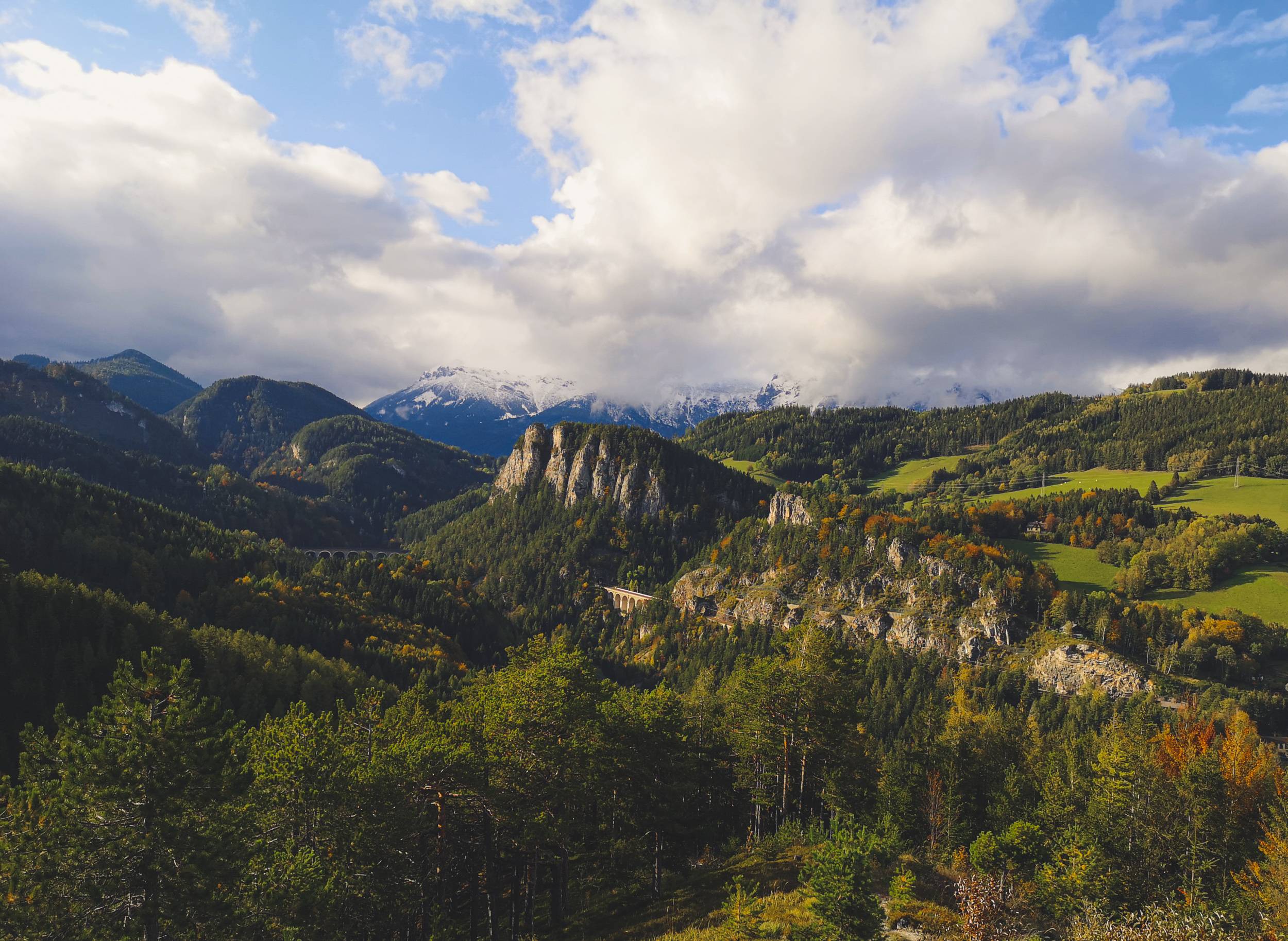
You can almost ride up to “20 Schilling Blick” on Semmering Railway. Photo by Alis Monte [CC BY-SA 4.0], via Connecting the Dots
The hike might as well end here in Wolfskogel but it could be extended virtually as much as you want. Personally, I went only as far as Breitenstein as the mid-autumn period of daylight and train schedule limited the possible amount of time outside.
There are two ways to reach the town: The first one descends through the via ranger roads and takes about 40min. The hike is short but not as picturesque as the 2h alternative – Semmering Bahnwanderweg. Whichever road you take, they’ll connect right to Breitenstein train station.

Wolfsbergkogel (left) and Haidenkogel (right) from the rock on 20 Schilling Blick. Photo by Alis Monte [CC BY-SA 4.0], via Connecting the Dots
Semmering Bahnwanderweg (The Railway Hike)
- Distance: up to 23 km / 14.29 mi
- Type: One direction
- Difficulty: Intermediate
This is rather a hiking trail than a hiking route but given that Semmering Bahnwanderweg dedicated to the railway, it is not that hard to do whichever part you like. Starting from Semmering train station the distance to Breitenstein – 9km / 5.59 mi, to Klamm – 15 km / 9.32 mi, to Payerbach – 21 km / 13.04mi, and to Gloggnitz – 23 km / 14.29mi. I’m sure that with the given segmentation – every hiker will find a distance within Semmering Bahnwanderweg to fit their needs.
Styrian Railway Hike
- Distance: 17 km / 10.56 mi
- Type: One direction
- Difficulty: Intermediate
It is Semmering Bahnwanderweg version on the Styria side of the railway. The 17 km / 10.56 mi hiking trail connects Semmering station to Mürzzuschlag on a family-friendly path. Semmering Railway hike also offers some insight into the history of the region, when the railway was built. There is a whole museum dedicated to the Southern Railway Museum in Mürzzuschlag, where you can learn about Semmering Pass and the rest of the railway.
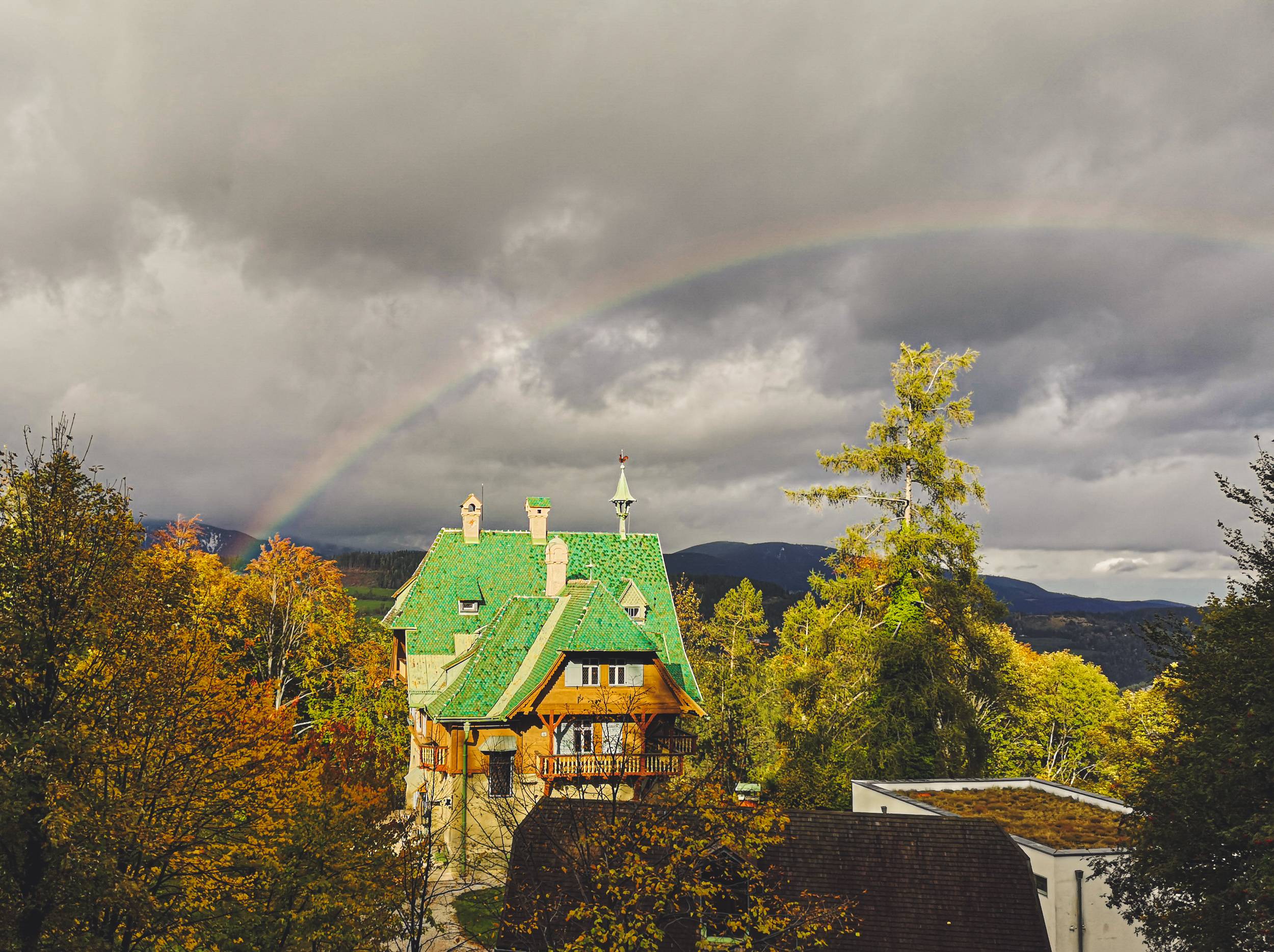
“If you want to understand the world – walk.” – Werner Herzog | Photo by Alis Monte [CC BY-SA 4.0], via Connecting the Dots
Personal Experience
To wrap things up, I don’t think it matters which hike you’ll choose – inevitably Semmering will leave a mark in your memory. It was my first trip outside Vienna since I started living in this country, and almost a year later, I still think that Semmering is the best one day getaway to so-called “Vienna mountains”. Especially, if you are a tourist, wanderlusting Austrian nature. Not to somehow downgrade the tourism but to compared to hiking near Schneeberg or Rax, Semmering has much more culture and infrastructure to offer. You can simply get out at Semmering train station and walk any direction, and I could bet that that would do.

All content and photos by Alis Monte. If you want to collaborate, contact me on info@ctdots.eu | Photo by Alis Monte [CC BY-SA 4.0], via Connecting the Dots
Frequently Asked Questions
How long Semmering Railway Trail is?
Semmering Railway Trail (Semmering Bahnwanderweg) is 23 km / 14.29 mi long.
How long is Semmering Railway?
From Gloggnitz to Mürzzuschlag, Semmering Railway is 41 km / 25.5 mi long.
Where is Semmering Railway located?
Semmering Railway is located 100 km / 60 mi from Vienna and 107 km / 66.5 mi from Graz. It connects two Austrian regions Styria and the Lower Austria
What is the oldest mountain railway in the world?
Built between 1848 and 1854 Semmering Railway in Austria is the oldest railway in the world.
When was Semmering Railway built?
Semmering Railway was built between 1848 and 1854.